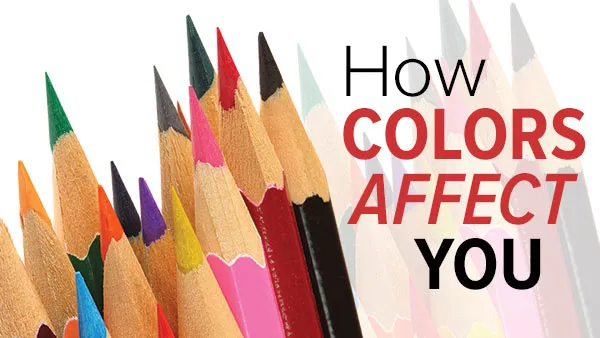How colours affect you
Published on 26th February 2021

This course is under Hobby and Leisure in Great Courses Plus, accessible through our eResources, and delivered by William Lidwell. Here you can learn how colour influences your brain and how to use this knowledge to your advantage. It is one of the reasons why colour is used to sell products and promote companies. There are six universal colours, black, white, red, yellow, green and blue and there is a lecture devoted to each one.
The course investigates the power of colour on human behaviour, and how our understanding of colour could be the difference between success and failure. Lidwell discusses the discovery of the theory of optics by Isaac Newton and the fact that our brains interpret signals from the cones in the eye.
We taste with our eyes long before we taste with our mouths. Colour means different things to different parts of the brain and also means different things in different contexts. Each of these lectures is backed up by research, experiments and enlightening case studies.
In his first lecture, Lidwell talks about the colours black and white, which are the only true universal colours and how colourful products are perceived to be worth less than those of black and white.
In lecture two we turn to the colour red which signifies strength, beauty and passion, but also in competitive situations it signals dominance. It is thought that a sports team wearing red has a competitive advantage as it makes the opponents feel intimated.
In the yellow lecture he goes into the fine line between good and bad shades of yellow and when it can be a signal of either health or weakness. It is the least popular colour worldwide even though it is often considered a vibrant happy colour.
Green symbolises fertility, envy and life and is very aesthetically pleasing. It is associated with an approach motivation and is thought to improve creativity. It is also deemed to have restorative powers which help to restore our batteries and reduce mental fatigue and anxiety.
In the final lecture he focuses on the last colour of this sequence and the most commonly favourite colour throughout the world – blue. Blue signifies openness and creativity, friendliness and peacefulness. While blue light can promote alertness and well-being during daytime, it has the opposite effect at night and can cause serious diseases.
This course would be a useful tool to pick up some tips and tricks for anyone thinking of setting up a business, or even for the image-conscious individual who might want to portray themselves in a certain way to the public. I would never have thought before taking this course that colour could have such an impact on our attitudes and behaviour. I learned about the significance of colour all around me and I will look at the world in a whole new way in future.
Submitted by Teresa in Inchicore Library.